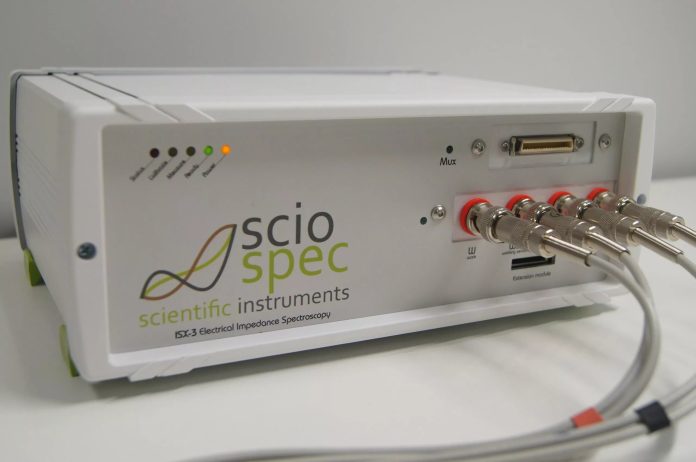LCR (Inductance, Capacitance, Resistance) meters, essential tools in electronic testing and design, have witnessed significant advancements in technology, offering enhanced features and capabilities. As the demands of modern electronic applications evolve, the latest innovations in LCR meter technology aim to address new challenges, improve accuracy, and provide greater flexibility. This article explores the recent advancements in LCR meter technology, highlighting key features that set them apart in the market.
1. Broad Frequency Coverage:
- Advancement: The latest LCR meters offer a wider frequency range, catering to the needs of diverse applications. Some models provide the capability to perform measurements across a broad spectrum, from low frequencies for power applications to high frequencies for RF (Radio Frequency) and microwave applications.
- Benefits:
- Enables comprehensive analysis of components across different frequency bands.
- Ideal for testing a wide range of electronic devices, from power supplies to wireless communication systems.
2. Impedance Analysis and Equivalent Circuit Modeling:
- Advancement: Advanced LCR meters now incorporate impedance analysis and equivalent circuit modeling capabilities. These features go beyond basic measurements, providing detailed insights into the complex behavior of components and allowing users to model real-world scenarios.
- Benefits:
- Facilitates a deeper understanding of component characteristics.
- Essential for designing circuits with precise impedance matching and optimizing performance.
3. Multi-Channel Measurements:
- Advancement: Some modern LCR meters feature multiple channels, allowing simultaneous measurement of different components or parameters. This capability enhances efficiency in applications where testing multiple channels concurrently is advantageous.
- Benefits:
- Increases throughput in manufacturing environments.
- Streamlines testing processes for circuits with multiple components.
4. Touchscreen Interfaces and User-Friendly Controls:
- Advancement: Many new LCR meters come equipped with intuitive touchscreen interfaces, providing a user-friendly experience. These interfaces offer easy navigation, real-time data visualization, and quick access to essential functions.
- Benefits:
- Enhances user experience with a modern and intuitive interface.
- Facilitates efficient operation and quick analysis of measurement results.
5. Automatic Component Identification:
- Advancement: Some LCR meters feature automatic component identification, where the instrument can recognize and categorize the type of component being measured. This feature streamlines the testing process by eliminating the need for manual selection of measurement parameters.
- Benefits:
- Reduces the risk of human error in selecting measurement settings.
- Improves overall testing efficiency and ease of use.
6. Connectivity Options:
- Advancement: Modern LCR meters often come equipped with various connectivity options, including USB, LAN, and Bluetooth. These features facilitate data transfer, remote control, and integration with other laboratory equipment and automation systems.
- Benefits:
- Enables seamless data sharing and storage.
- Supports integration into automated testing setups for increased efficiency.
7. Advanced Calibration and Self-Diagnostics:
- Advancement: Advanced calibration features, including automatic calibration routines, ensure the accuracy and reliability of measurements. Some LCR meters also incorporate self-diagnostics to identify and alert users to potential issues.
- Benefits:
- Enhances measurement accuracy and stability over time.
- Provides proactive alerts for maintenance and troubleshooting.
8. Portable and Handheld Designs:
- Advancement: There is a trend toward more portable and handheld LCR meters. These compact designs offer portability without compromising on measurement accuracy and functionality.
- Benefits:
- Convenient for field measurements and on-the-go testing.
- Ideal for applications where space is limited.
9. Integration with Software and Cloud Platforms:
- Advancement: Many LCR meters now integrate with software applications and cloud platforms, allowing users to manage and analyze measurement data efficiently. Cloud connectivity enables remote access to data and results.
- Benefits:
- Facilitates centralized data management and analysis.
- Supports collaborative work and data sharing across teams.
10. Enhanced Measurement Speed and Throughput:
- Advancement: Advancements in measurement speed contribute to higher throughput, allowing users to perform measurements more rapidly. This is particularly beneficial in high-volume manufacturing environments.
- Benefits:
- Increases overall testing efficiency and productivity.
- Meets the demands of fast-paced production processes.
In conclusion, the latest advancements in LCR meter technology reflect a commitment to meeting the evolving needs of electronic testing and design. With features such as broad frequency coverage, impedance analysis, multi-channel measurements, user-friendly interfaces, and connectivity options, modern LCR meters empower engineers and technicians to achieve more accurate and efficient results. As technology continues to progress, these innovations play a crucial role in advancing electronic component testing and ensuring the reliability and performance of electronic systems.






